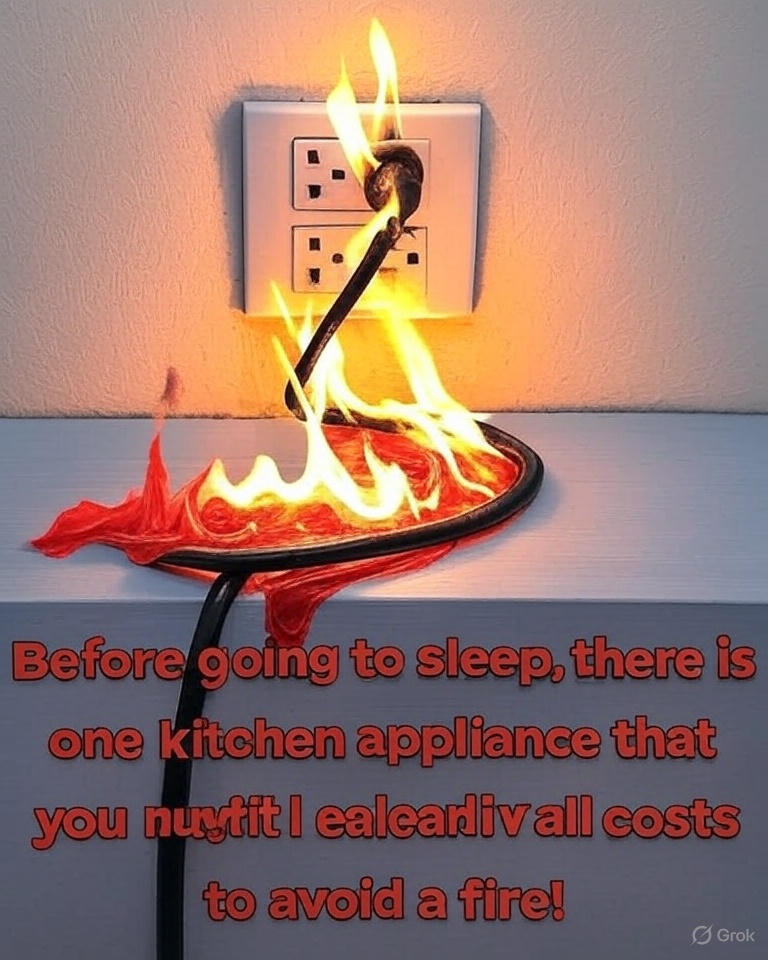Keep Your Home and Budget Safe! Disconnect These 5 Appliances When Finished
beyond shaving a few dollars off your electric bill. Some devices continue pulling electricity even when they’re switched off, quietly draining your wallet in what experts call “phantom load.” Others stay hot enough—or wired enough—to become genuine safety hazards if they’re left plugged in unattended. The average household loses around $100 to $200 a year to appliances that aren’t even in use. Add the potential fire risk into the equation, and unplugging becomes less of a suggestion and more of a smart, protective habit.
Household appliances make our lives easier every single day, but they also work in ways most people never bother thinking about. A device doesn’t need to be running to be active. Internal transformers, indicator lights, standby systems, and sensors all continue sipping power quietly in the background. Some appliances are designed to sit in standby mode at all times, ready to heat, switch on, or respond instantly. Others simply weren’t built with safety shutoffs robust enough to guarantee reliability 100% of the time. And that’s what makes a handful of everyday items worth unplugging immediately after use.
Space heaters top every expert’s list of appliances you should never leave plugged in. Even high-end models with automatic shutoffs aren’t fail-proof. They’re responsible for a huge percentage of winter house fires, especially when blankets, furniture, curtains, or clothing get too close without anyone noticing. Leaving one running while you sleep or while you’re out of the house is risky enough—but leaving it plugged in allows electrical components to stay warm or active even when they appear off. The smartest practice is simple: turn it off, unplug it, and give it space to cool.
Clothes dryers are another quiet energy sink. Even when not tumbling, the power system can draw 50 to 100 watts in standby mode. Over a year, that adds up to wasted money for absolutely no benefit. Dryers aren’t typically seen as fire risks when off, but their phantom load makes them a perfect example of appliances where unplugging is pure savings. A smart power strip can help cut the entire dryer setup off from the outlet with one switch, removing the need to yank cords out of hard-to-reach places.
Hair styling tools—curling irons, flat irons, wands—might be the most underestimated fire hazards in the home. They heat to temperatures well over 400 degrees, more than enough to scorch, melt, or ignite nearby fabric or paper. Many people assume the switch alone is enough, but buttons and dials wear out over time. Some models don’t have auto-shutoff at all. Others have shutoff systems that fail silently. Every hairstylist and firefighter agrees: unplug these tools immediately after use. Don’t rest them on a counter until they cool down, don’t trust your memory, and don’t assume a beeping light will save you. Store them in a heat-safe pouch away from anything flammable after unplugging.
Toasters and toaster ovens belong on the list for different reasons. Crumbs collect inside them, and those crumbs can smolder when the heating elements stay warm or when internal wiring shorts unexpectedly. The levers on some older models can stick, causing the appliance to heat when no one is watching. Unplugging them between uses eliminates the risk of a smoldering fire starting inside a metal box covered with crumbs you forgot to clean out. A weekly crumb tray cleaning and unplugging after each use drastically reduce both fire risk and wasted energy.
Phone chargers draw only a little power when left plugged in without a device attached, but during storms they become a pathway for damaging surges that can fry electronics in seconds. TVs and game consoles also pull steady phantom power, especially models that listen for voice activation or maintain internal updates. Power strips with switches make it easy to shut them all down at night or when you’re not using them. Coffee makers, especially older designs without auto-shutoff, can keep their heating elements warm for hours. If left on or plugged in long-term, they can overheat or trigger electrical failures. Meanwhile, microwaves are largely safe to leave plugged in—the clock is usually the only thing drawing energy.
Making unplugging easier doesn’t require turning your house upside down. A few small habits go a long way. Smart power strips eliminate the need to unplug individual devices and let you cut power to entire clusters with one switch. Labeling cords—especially seasonal appliances—helps you remember what needs attention. Some people build micro-habits, like unplugging hair tools before putting them away or unplugging heaters before leaving the room. These tiny routines turn into long-term protection.
The real point isn’t to unplug every single thing in your home—that would be overkill, inconvenient, and unnecessary. The goal is to be strategic, focusing on appliances that carry real risks or real costs. A handful of unplugged devices can prevent fires, reduce energy waste, and put money back in your pocket without changing how you live. It’s about treating your home with the same care it gives you: shelter, warmth, comfort, and safety.
Your home works hard for you. Taking a few seconds to unplug the right appliances is an easy way to return the favor—protecting your space, your budget, and your peace of mind every day.
